Introduction
Humankind’s understanding the sea dated back since 40,000 years ago. Earliest expressions were artforms expressing a foundational understanding – that the sea was feared and revered for its vast unknown. Yet, ancestral works in mythology and philosophy related the seas to spiritscapes, cosmic energies and even the origin of life, showing that humankind acknowledged an inherent connection to the sea – a common fascination about its allure, inability to be bounded and the ability to breathe life; it connects land to sea, sea to air, and to everything around it.
“For us, it wasn’t the land we owned, it was the land where our ancestors were buried. It was the land the Creator had given us… Where our sacred stories took place. We knew the animals. They knew us. It gave us life for our bodies and life for our spirits.” (Nerburn, Neither Wolf Nor Dog: On Forgotten Roads with an Indian Elder, 1994)”
Thesis
This thesis explores how the compounding effects of climate change can be remedied in a future where sea reclaims back the land humankind has claimed ownership of. Sea Change examines the lives, culture, and values of Sea Indigenous people of the world and how they interpret land and sea differently to allow man and nature to thrive through mutual dependence. The project proposes a hypothetical narrative situation in 2050 where the Singapore government makes the first move of removing the sea walls at the East Coast and letting the rising seas flood our land. It is interpreted through the planning and designing of the new water-land terrain as the new cultural, agricultural and recreational capital.
Premises
The thesis is therefore based on three premises. First, the analysis and critique of humankind relationship with sea and land within the rising local and global context of compounding, catastrophic climate change. Second, the lessons modern society can learn and apply from the Sea Indigenous communities of Southeast Asia to the urban planning and building of our lands, to facilitate management of the new climate and terrain. Third, in an idealized sea capital in Marine Parade, how the effects of climate change and sea level rise can be harnessed to create a new urban public realm by empowering public engagement and kinship.
Conclusion
Sea Change is an architectural proposal of a new paradigm where the seas are purposefully introduced and integrated into our urban and living environment, and our lives is subjected to the rhythms and cycles of tides, surges and nature. Designing on various scales, architecture calls for a reconciliative relationship with our environment that designs for processes of regeneration and thriving with nature.
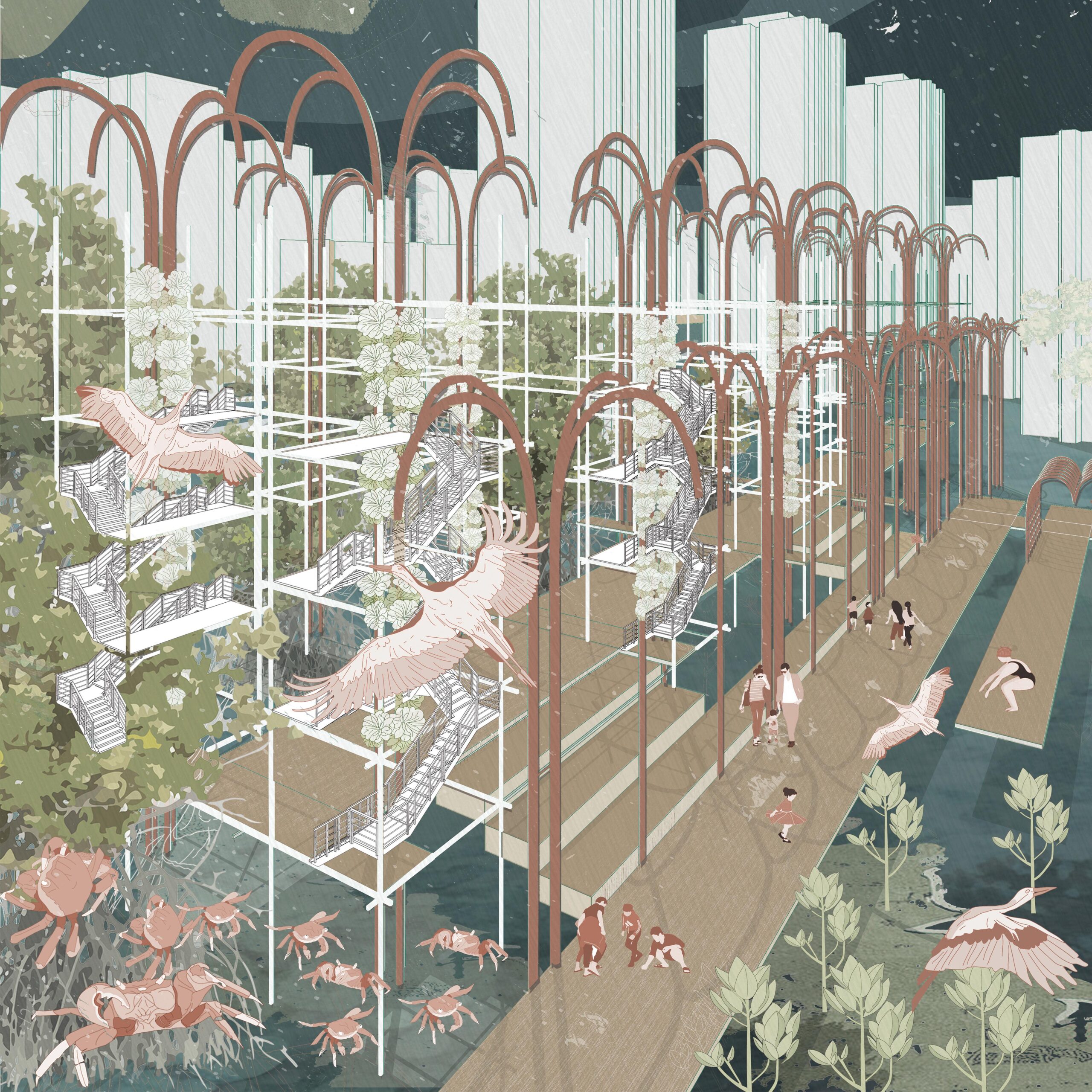
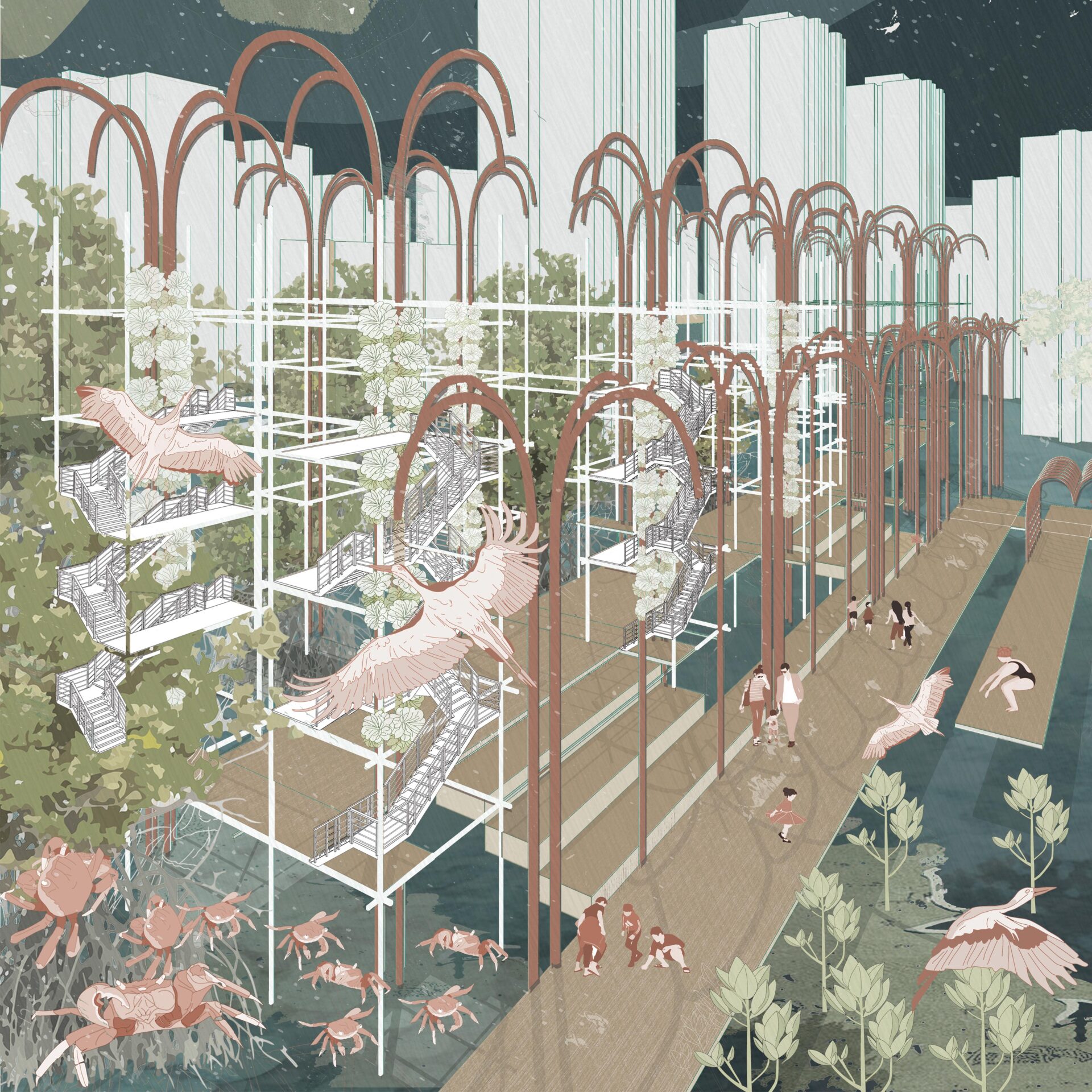
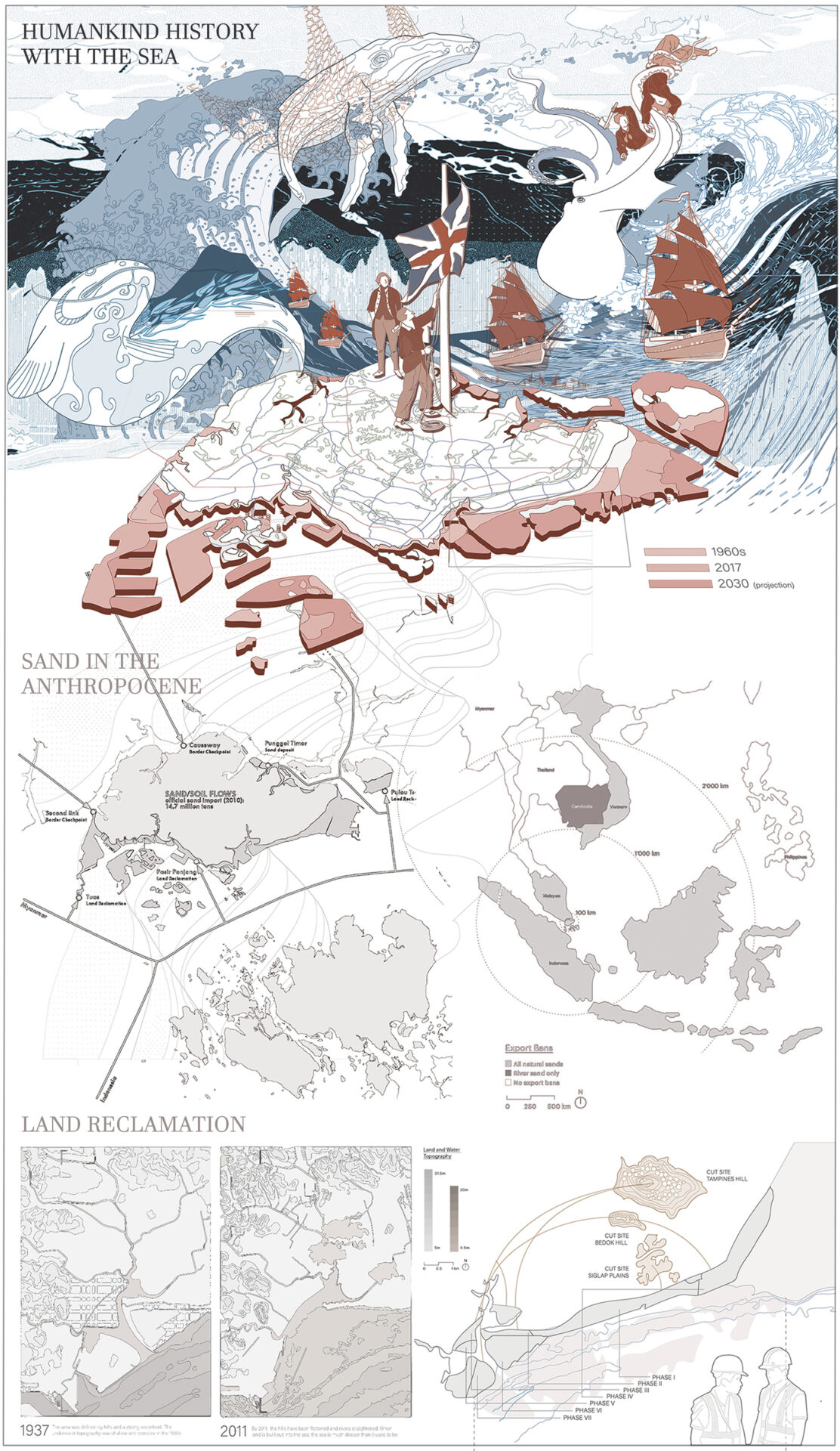
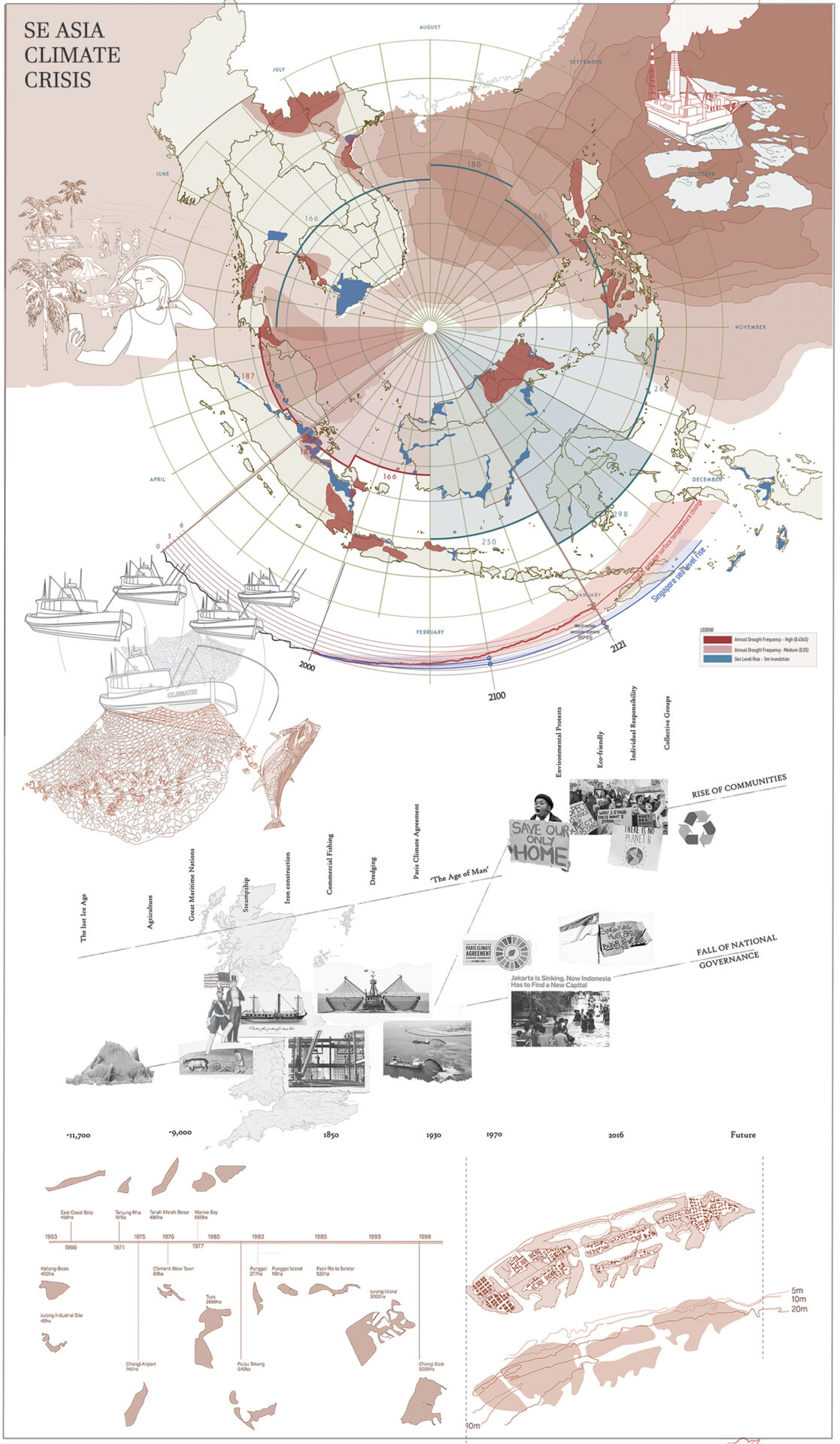
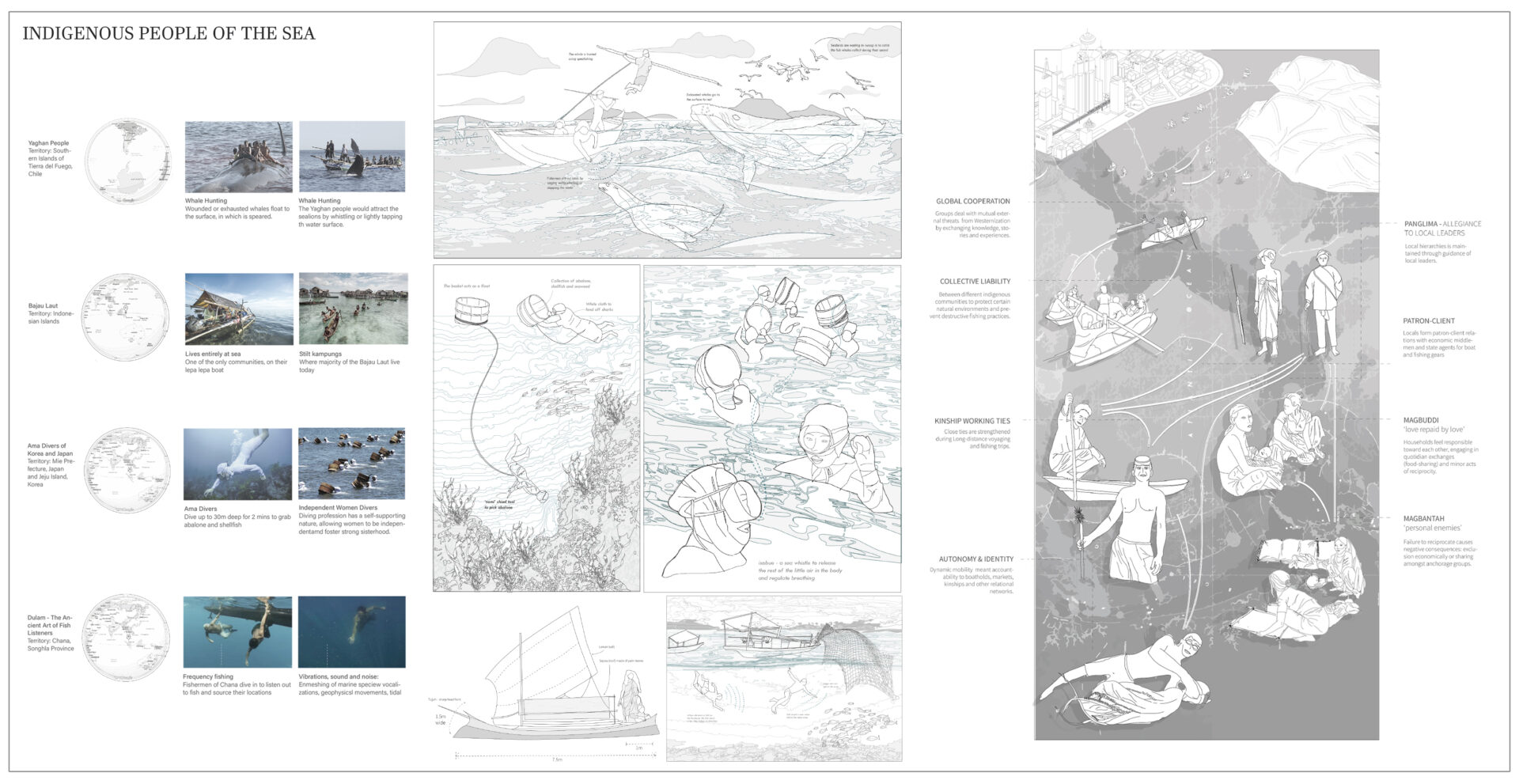
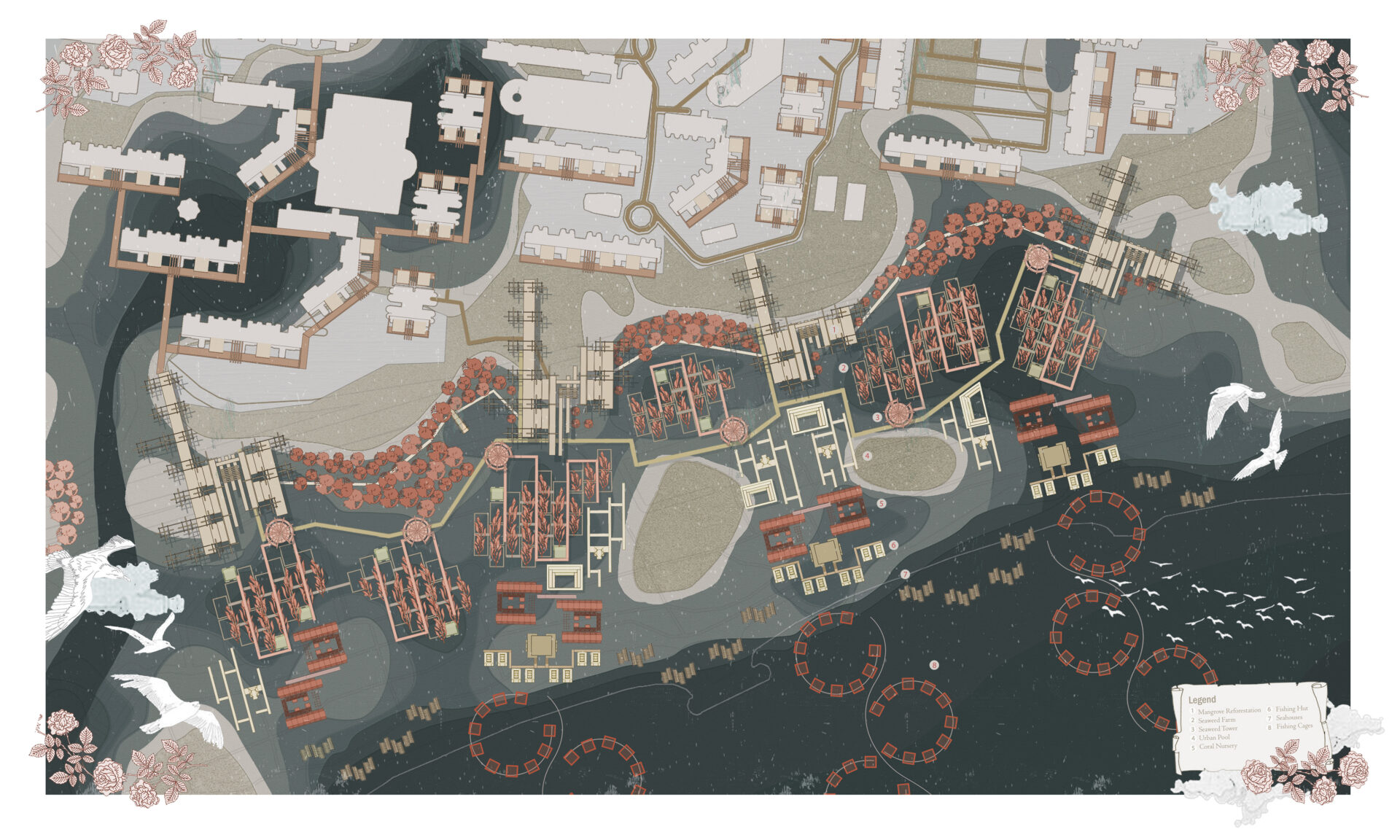
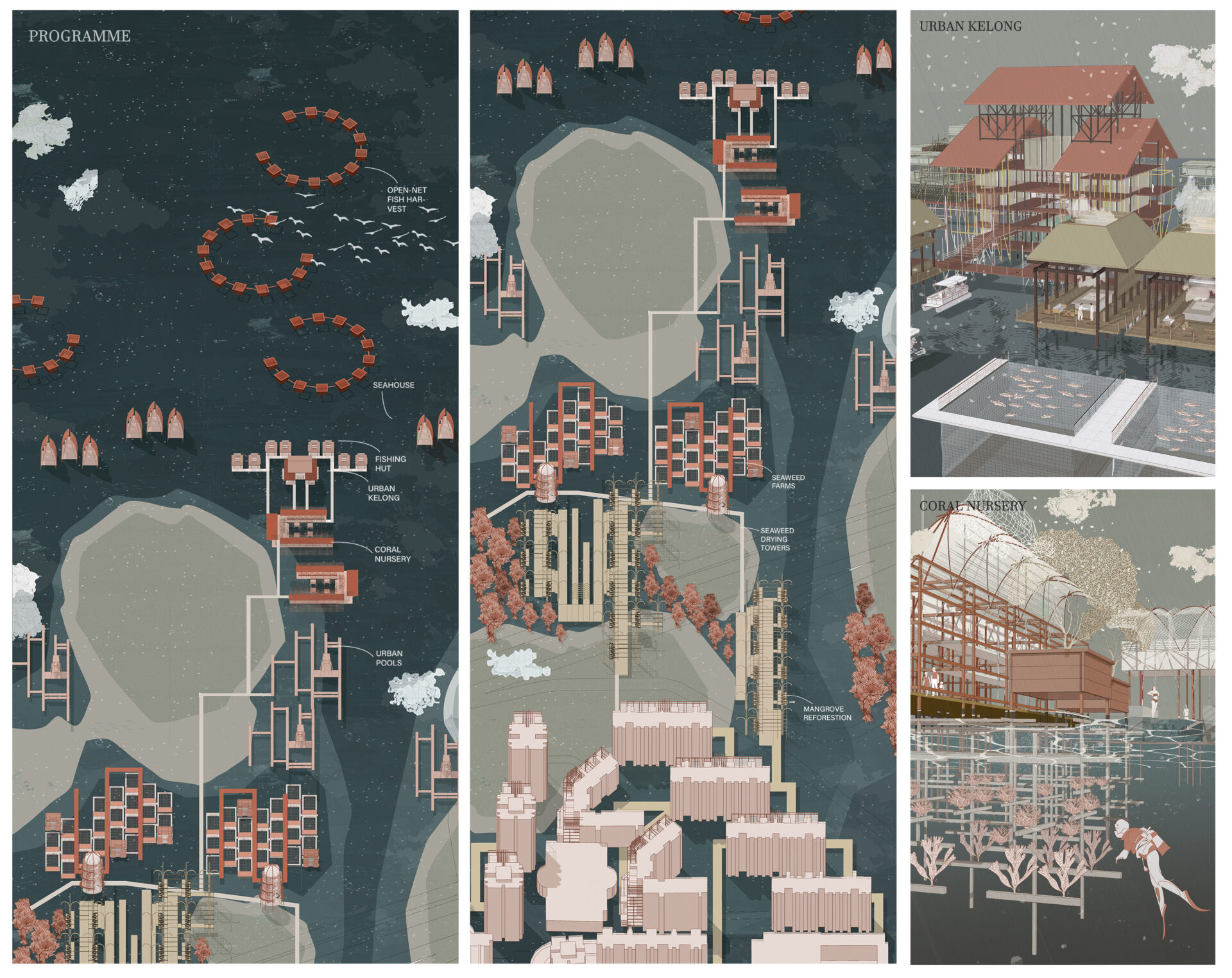
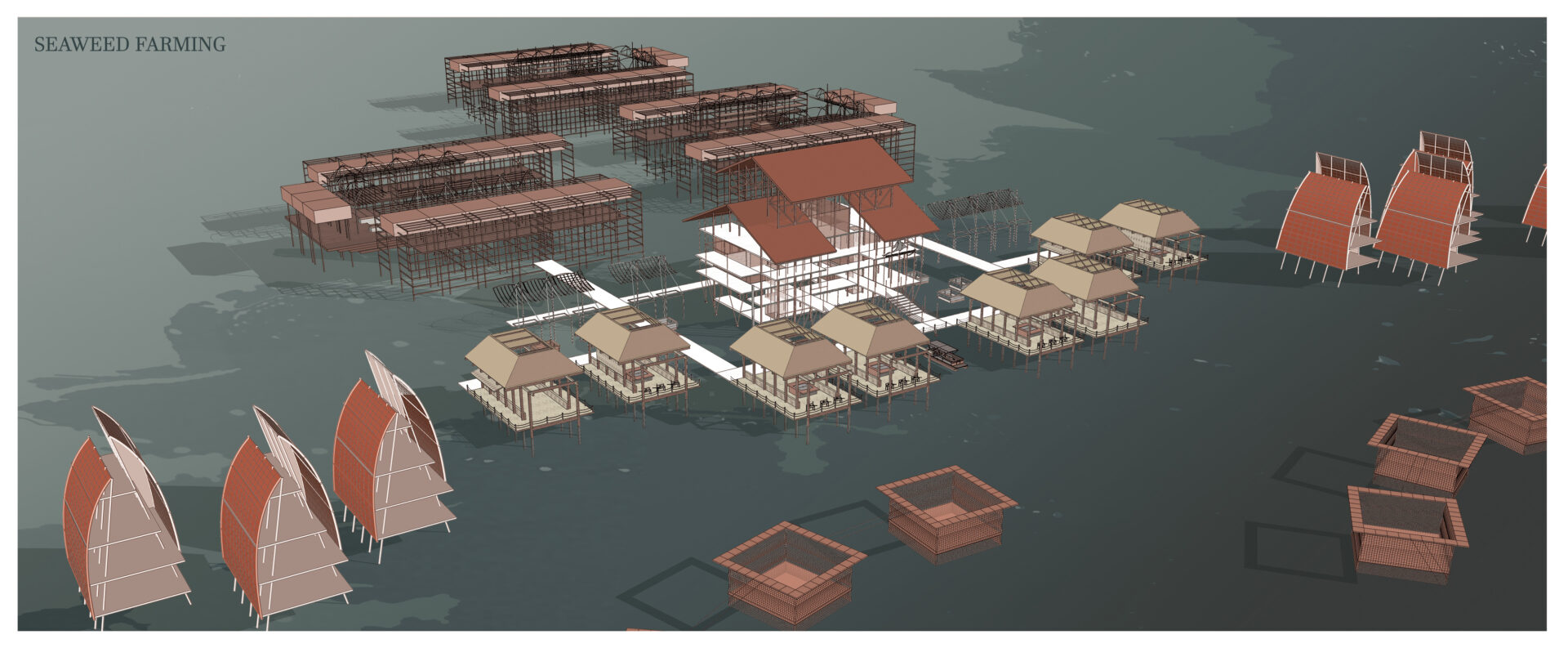
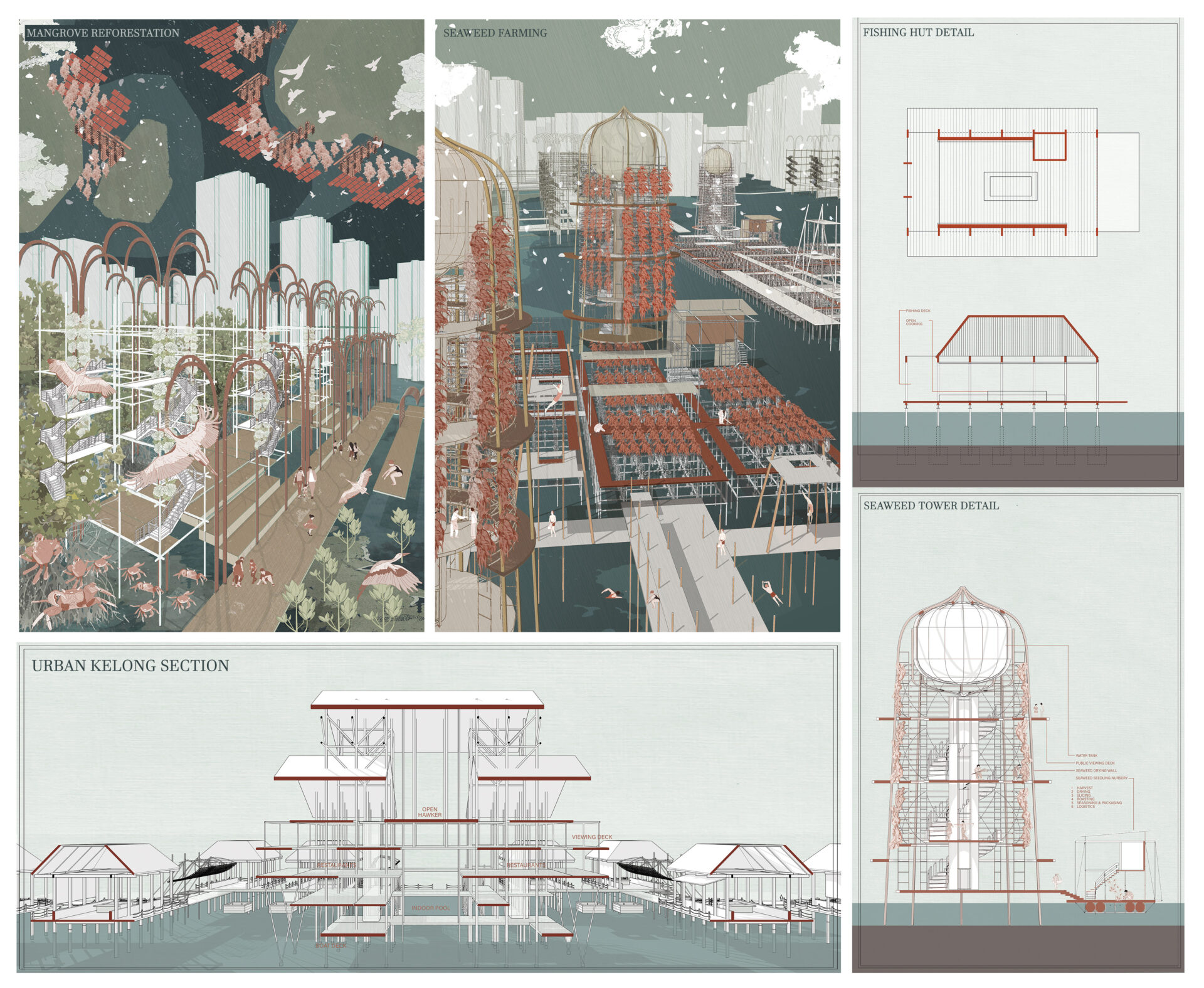
Supervisor's comments:
The project critiques humankind’s exploitation of the sea as a commodity and the land based and, land hungry trajectory of conventional development. It imagines a world where sea level rise has transformed much of our existing coastal suburbs have into submerged, intertidal zones.
- Adj. Asst. Prof. Peter SimInspired by the holistic and symbiotic relationship with the sea of global indigenous marine communities, such as the Orang Laut of South-East Asia, the project explores the possibility of the Marine Parade housing estate and the East coast Park as a new kind of aquatic urban environment. It suggests the possibility of a marine recreational landscape co-existing with one of aquaculture – where leisure and food sustenance are closely intertwined.